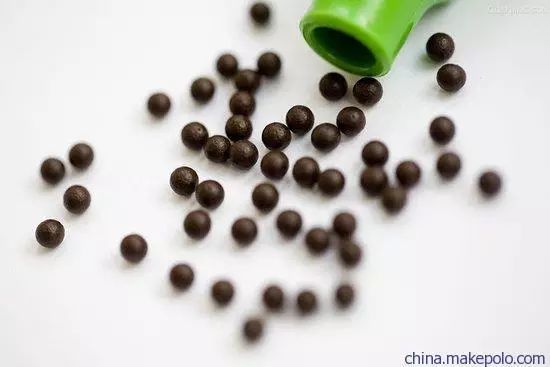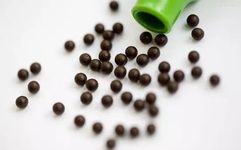Pills (wan) are spherical or quasi-spherical solid preparations made from raw medicinal materials combined with suitable excipients. They are one of the traditional dosage forms in Chinese medicine, first documented in the pre-Qin text “Fifty-Two Disease Formulas.” Even today, despite the significant advancements in modern pharmaceutical industry, Chinese medicine pills remain one of the most widely used forms of medication in daily life.

1. Classification of Pills
Pills are classified into various types based on their preparation methods and excipients, including honey pills (mi wan), water honey pills (shui mi wan), water pills (shui wan), paste pills (hu wan), wax pills (la wan), concentrated pills (nong su wan), and drop pills (di wan).
Water Pills are made from finely powdered medicinal slices using water (or other binding agents such as yellow wine, vinegar, diluted medicinal juice, sugar solution, or water containing less than 5% honey) as a binder.
Water pills are small, with a dense and smooth surface, making them easy to swallow and resistant to moisture; they disintegrate quickly, facilitating absorption, and are generally suitable for exterior-releasing agents, heat-clearing agents, and digestive agents. They can encapsulate volatile or irritating substances to mask unpleasant odors or incorporate slow-release and fast-release medications into the inner and outer layers of the pill, respectively, creating long-acting formulations, such as Liu Shen Wan and She Xiang Bao Xin Wan.
Honey Pills are made from finely powdered medicinal slices using processed honey as a binder. Pills weighing more than 0.5g are called large honey pills, while those weighing less than 0.5g are called small honey pills.
Honey pills enhance the nourishing effects of the medicine, correct unpleasant tastes, and slow down the dissolution and absorption of the medicine, resulting in a milder and more prolonged effect. They are mainly used for tonifying herbs or treating chronic diseases, such as Wu Ji Bai Feng Wan, Xiao Er Zhi Bao Ding Ding, and Niu Huang Qing Xin Wan.
Water Honey Pills are made from finely powdered medicinal slices using a mixture of water and processed honey as a binder.
They have low moisture content, making them easy to store and consume; their effects are slow and lasting, generally suitable for tonifying agents, such as Bu Pi Yi Chang Wan and Gui Fu Di Huang Wan.
Concentrated Pills are made from extracts of medicinal slices or parts of slices that are concentrated and then combined with suitable excipients or remaining powdered slices, using water, honey, or a mixture of honey and water as a binder.
They are small, with a high content of active ingredients, easy to take, and convenient to carry, such as Liu Wei Di Huang Wan, Xiao Ke Wan, and An Shen Bu Xin Wan.
Paste Pills are made from finely powdered medicinal slices using rice flour, rice paste, or wheat paste as a binder.
They have a harder consistency and dissolve slowly, which can prolong the medicinal effect and reduce gastrointestinal irritation. Toxic or irritating medicinal slices, as well as formulas requiring delayed effects, can be made into paste pills, such as Xiao Jin Wan and Xi Huang Wan.
Wax Pills are made from finely powdered medicinal slices using beeswax as a binder.
Wax pills do not disintegrate in the body and are expelled intact, similar to modern long-acting skeletal formulations. They are suitable for medications containing many toxic or highly irritating substances or those requiring intestinal absorption, such as Fu Ke Tong Jing Wan and San Huang Bao La Wan.
Drop Pills are spherical or quasi-spherical preparations made by heating and melting raw medicinal materials with suitable matrices, then dropping them into a non-miscible, non-reactive cooling medium.
They have high bioavailability, accurate dosing, and rapid dissolution, making them effective for acute treatments. They can also be made into slow-release or controlled-release formulations, such as Compound Dan Shen Drop Pills and Huo Xiang Zheng Qi Drop Pills.

2. Precautions for Taking Pills
(1) When using Chinese patent medicines and Western medicines together, it is best to space the two by 30 minutes, regardless of which is taken first.
(2) Generally, pills should be taken with a small amount of warm water. Large honey pills should be chewed or broken into smaller pieces before taking with warm water, while some emergency pills can be placed directly under the tongue.
(3) For pills treating stomach pain or vomiting (such as Huo Xiang Zheng Qi Wan or Fu Zi Li Zhong Wan), they can be taken with ginger decoction to enhance their effects.
(4) For pills treating dysmenorrhea (such as Ai Fu Nuan Gong Wan), they can be taken with warm red sugar water to enhance their warming and blood-activating effects.
(5) For pills treating chronic enteritis (such as Bu Zhong Yi Qi Wan), they can be taken with jujube decoction to enhance their spleen-tonifying and qi-invigorating effects.
(6) For pills treating stroke-related hemiplegia or facial asymmetry (such as Da Huo Luo Wan), they can be taken with yellow wine.
(7) Sedative and calming pills (such as Tian Wang Bu Xin Wan) should be taken half an hour before sleep.
(8) For pills preventing habitual miscarriage and threatened miscarriage (such as Zi Shen Yi Tai Wan), they can be taken with light salt water or honey water.
Author: Gu Xiaoyan, Yueyang Hospital of Integrated Traditional Chinese and Western Medicine, Shanghai University of Traditional Chinese Medicine
First Review: Zhu Quangang
Second Review: Lin Jingyin
Drug Safety Cooperation Alliance Bringing you not only medication safety but also more exciting content. Please follow the official website of the “Drug Safety Cooperation Alliance” at www.psmchina.cn. Long press the QR code to follow the official WeChat account of “Green Medicine Alliance“.
Bringing you not only medication safety but also more exciting content. Please follow the official website of the “Drug Safety Cooperation Alliance” at www.psmchina.cn. Long press the QR code to follow the official WeChat account of “Green Medicine Alliance“.

